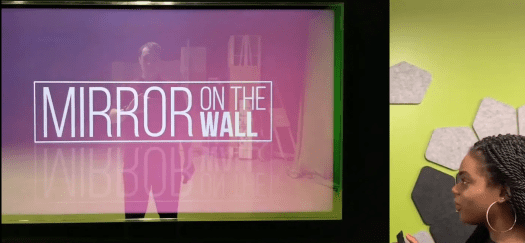 By Michael L. Mathews January 27, 2020 – The novelty and intrigue of Artificial Intelligence (AI) makes it one of the most exciting yet elusive disruptive technologies across all industries. Under careful examination, you will find numerous sectors that have innovatively enabled small pieces of AI. These successful enabling aspects of AI into products and services have given many companies a very balanced phase-in approach into the world of AI
By Michael L. Mathews January 27, 2020 – The novelty and intrigue of Artificial Intelligence (AI) makes it one of the most exciting yet elusive disruptive technologies across all industries. Under careful examination, you will find numerous sectors that have innovatively enabled small pieces of AI. These successful enabling aspects of AI into products and services have given many companies a very balanced phase-in approach into the world of AI
With higher education having a combined governance and consensus model of decision making, AI enablement can be much more challenging to implement. As we have seen over time, higher education will lag in most technologies, mainly due to this unique style of decision making. Unfortunately, this inability to leverage AI in higher education will be much more visible, as industries continue to move forward. Consider the current reality that students arrive on campus with automobiles, appliances, TV and electronics that are all AI-enabled. Over the next decade, AI-enabled products across industries will naturally produce an expectation in the products, services, and deliverables in higher education.
Considering few colleges or universities are big risk-takers, there appear to be two approaches to start enabling pieces of AI on a campus. The first is to leverage small AI enhancements in areas that don’t require complete campus-wide consensus. This would be in areas like auxiliary services or information technologies. The second is to identify the top issues of college campus leaders and determine if AI can assist.
Many campuses identified student mental health and wellness as a top priority. EducationDive in its January 9, 2020 article titled President Speaks: 12 college leaders, 12 ideas for higher ed named improving mental health as an key issue. Oral Roberts University in 2018 also identified student wellness as an issue and in early 2019 to experiment with enabling AI in a few smart mirrors to address numerous campus challenges. After the first few test and overwhelming reception, we decided to call it the MQ-Mirror.
AI-Enabled Mirror Intelligence
The AI-Enabled MQ-Mirror application has been designed at Oral Roberts University to bring the power of IQ, EQ, and now MQ together via a glass mirror. The mirror integrates a mini-processor, IoT, AI, digital assistant, and the entire university digital ecosystem. Students can access all campus services and engage with the entire campus environment as a life-size digital assistant.
The ability to program AI within the MQ-Mirror has created a test case to allow students to interact with the mirror and test their level of mental health and well-being. Using natural language programming, mirror coding language and the AI capabilities of Amazon Alexa allow breakthroughs in creating an autonomous method to address mental health in a special manner. The concept of nudging students takes on a whole new meaning with the MQ-Mirror.

MQ-Mirror Cost
Oral Roberts University has installed 20 units on its campus with a base unit cost of $5,000. We feel this is an affordable investment for schools big and small and can be phased onto a campus. In addition, we are offering to other universities a 10-hour training certificate program that will teach how to program AI skills and do customized programming.
The MQ-Mirror was recently shown to colleges and universities from 22 European countries, which all endorsed the break-through concept, including a new partnership with the University of Latvia.
The MQ-Mirror enhances the way humans interact with intelligence
A new application that students will interact with personal data, global-communications, self-navigation, self-help, data analytics, music, video, education, fitness, artificial intelligence, and robotic functionality is the glass mirror. The new form-factor of a glass mirror has all the attributes to fully engage human-to-digital-and-visual interaction. The glass mirror, combined with the small new computer design hidden within the mirror frame, has made significant advancements in personal fitness by combining the mirror, smartphone, and wearable watch. All three synchronized together provide a premier digital experience that accesses personal data, AI, machine learning data, personal trainers, eCourses, and text to speech narration. The mirror itself provides the real-life experience of both virtual and augmented reality (Mirrored Reality). Figure-1 below shows one of the first Fitness Mirrors[i] as one of the first mirror form-factor designs. The mirror allows the trainee to verbally or physically activate the digital applications packaged in the mirror. They can connect to a live, personal trainer, take an online course pertaining to fitness, and display all the vital attributes of big data-to-personal data.

Figure 1 – Fitness Mirror connected with a remote trainer (Source Mirror.co)
The human fascination with the mirror combined with the emergence of AI, virtual digital assistants, machine learning, eLearning, and 5G connectivity allows the human being to become front-and-center instead of the technology itself. Up to this point in the history of computers, the device has taken center stage to the human being. This has caused may undesired social, physical, and psychological outcomes.
The Future of Mirrored Reality as the Future Form Factor
With the micro-computer behind the mirror integrated with artificial intelligence and instant access to the world of knowledge, a human is now at the center of the technology versus the device. The human, along with the mirror, personalizes all experiences and engagements by opening a portal into the digital world. Figure-2 below represents the engagement of the whole person engaging with themselves mapped against visual data visually and audibly. The computer functionality behind the glass mirror mixed with personalized AI/Machine Learning allows the mirror to perform everything that a computer can. Universities like Oral Roberts University who have integrated wearable watches and all educational success factors, can now simply integrate them into the mirror. These universities who have completed their digital transformation projects are now able to move everything to the new form-factors such as the smart mirrors and smart glasses. In essence, they are making a subset of the ‘Smart Campus’ and providing ‘Everything-as-a-Service’ from their own ecosystem.

Figure-2 – MQ-Mirror (Mirrored Intelligence)
Image created by Mike Mathews
With a glass mirror capable of engaging and mirroring the human actions with total integration, the mirror becomes ‘intelligent’ and fully integrated with the human being. This new form-factor may slow down and even reverse the latest research proving that extensive engagement with Smartphones is causing depression and anxiety.
The fascination with mirrors and ourselves has been around for centuries. This fascination has caused many people to decry ‘vanity’ as people spend endless hours envisioning who they are or who they could be — compared to what they have imagined in their mind. We are now capable of seeing and expressing ourselves against all the worlds of known truths, knowledge, intelligence, and data that allow interactions with people, people groups, and solutions.
Engaging a real human being that can visually and physically interact with the entire virtual universe of knowledge, wisdom, and truth has endless possibilities. Just as the smartphone form-factor transitioned the way humans digitally interact with a computer, themselves, and each other, the Intelligent Mirror Reality will visually and digitally transition the way the world of knowledge and society engage. However, the focus will be on the human side versus the device side of intelligence.
The MQ-Mirror Application usage at Oral Roberts University has already been named ‘Everything-as-a-Service’ by CIO Magazine as one of the next concepts on a campus and across any enterprise.[ii]
An individual will be able to wake up in the morning and interact with the MQ-Mirror and say ‘Alexa, what was my productivity yesterday?’ The digital assistant with Alexa AI will be able to report all personalized productivity items that the individual feels as productive or important; such as sleep patterns, fitness ratings, heart rate, 401K, monthly budget to date, tasks completed, and individual smartphone utilization – followed by suggested tips for the day. With the MQ-Mirror having the same mobile apps synced with the smartphone, the individual can tell Alexa to order their favorite Starbucks drink at the nearby Starbucks. The machine learning with the AI software will begin the journey of learning the nuances, likes, and dislikes of the individual to advance the engagements and suggestions – because technology should be about the person vs. the device. Students will be able to instantly ask and display all the student success factors that help them understand, navigate, and set daily and personal goals for their academic achievement.
[i] Fitness mirror; https://mirror.co
[ii] Everything-as-a-Service; CIO Magazine, March 25, 2019; https://www.cio.com/article/3373841/xaas-making-the-shift-to-services-oriented-it.html
Michael L. Mathews, CIO and VP of Technology and Innovation at Oral Roberts University has over 24-years of experience as a senior-level IT executive bringing creative solutions that value the end-users of technology and business process management. Mathews has a deep and rich work history including 12-years at Cray Research as an instructor and global training manager; as well as 10-years at SunGard Higher Education where he served as chief information officer, and vice president of academic services. Michael also serves on the Board of Directors of the United States Distance Learning Association.


One Reply to “”